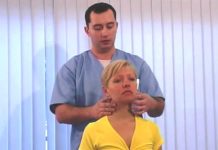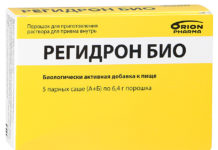Hydrogen peroxide is a clear liquid with a viscous consistency; it does not have a pronounced taste or smell. In traditional medicine, the drug is used as an antiseptic during treatment of wounds or dressings. In folk recipes, perhydrol can be found as the main ingredient in the treatment of otitis media, periodontitis, osteochondrosis. The healing properties of hydrogen peroxide is a large list of qualities, the effect manifests itself in different ways, depending on the amount of active substance and the method of liquid administration.
Material Content:
Useful properties of peroxide
Perhydrol is an element that is found in all living organisms.

It participates and affects almost all processes that occur in the internal environment of a person:
- It stabilizes the composition of the blood, makes it more fluid, contributes to a better oxygenation of blood cells.
- Expands blood vessels, relieves their spasm. Accordingly, reduces blood pressure.
- Participates in hormonal changes in the thyroid gland, as well as in the adrenal glands, ovaries and testicles.
- It normalizes and maintains a stable acid-base balance in the body.
- Prevents hypoxia (oxygen starvation) of tissues, improving the flow of oxygen into them.
- Promotes better regeneration of damaged tissues.
- Destroys toxins and destroys infectious agents, is an antioxidant.
Hydrogen peroxide is actively involved in metabolic processes, accelerating and stabilizing them. The drug does not accumulate in the body even with prolonged use, therefore, does not have a negative, toxic effect.
Removal of worms by hydrogen peroxide
Once in the body, H2O2 is split into oxygen (O2) and water (H2O), and since worms live in an oxygen-free environment, the appearance of O2 in the gastrointestinal tract adversely affects them. But the disadvantage of deworming with peroxide is the duration of treatment. This is due to the fact that only adults die by the action of oxygen, in order to get rid of all the worms, you need to take the drug until the last larva grows. Usually the course is 21 days.

The famous professor Neumyvakin developed a scheme, following which you can get rid of parasitic invasion. But besides deworming, this method has many more useful properties, which will be described below.
The technique, which is aimed specifically at combating helminths, consists in setting up a rectal dropper with the addition of H2O2.
The solution is prepared as follows:
- 1 tsp dried wormwood to pour a glass of cold water and put on a small fire. Bring to a boil and boil for 2-3 minutes.
- Set aside the broth to cool.
- When the mixture cools, it must be thoroughly filtered through cheesecloth, and then inspected so that particles of wormwood do not get into the broth.
- Add cold, always boiled, water to the mixture. Ultimately, 200 ml of liquid should come out.
- Add 10 ml of No.% hydrogen peroxide solution.
To carry out the procedure itself, you need to purchase a dropper system and a 200 ml bottle in a pharmacy, for example, with glucose or NaCl. Release the vial from the contents and fill with a ready-made broth, cut off the needle at the end of the tube from the system. Next, you should connect the system to the bottle, for this the rubber cap is pierced with the end with a wide needle, and another needle is inserted from the side - the air duct. After that, with the help of a special wheel, a dropper gradually opens and the solution fills the system of tubes. It is important to open the wheel a little bit so that as little air as possible is left in the system.
After filling the system, the end of the tube with the cut-off needle should be lubricated with petroleum jelly and carefully injected into the rectum of the patient, who should lie on his left side with bent legs.
Open the wheel completely and inject the solution with a jet until the patient has a desire to empty.
After defecation, reinsert the tube and drip the solution 1-2 drops per second.
The healing properties of such a procedure are fully manifested after a month of everyday procedures, so few resort to this method of deworming.
The use of hydrogen peroxide in ENT diseases
Diseases of the ENT organs (rhinitis, otitis media, laryngitis and others) most often occur as a result of the ingress of pathogenic bacteria into the body, and since hydrogen peroxide has antibacterial and antiseptic properties, the solution is popular in the complex treatment of pathologies.
Ear cleansing
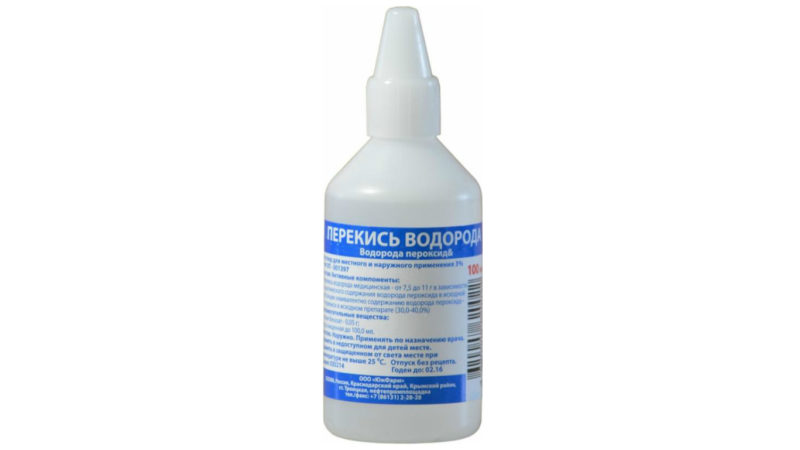
Sulfur often accumulates in the ear canals, sulfur plugs are formed and, as a result, hearing is impaired. The properties of hydrogen peroxide help people deal with this problem. 2-3 drops of a solution warmed up to body temperature are injected into the ear with a pipette, wait a few minutes, then olive oil is instilled into the same ear. Within a minute, sulfur is easily excreted with a cotton swab.
Otitis
To combat inflammation of the inner ear, cotton swabs are used that are moistened with hydrogen peroxide and injected into the ear canal. Before this procedure, it is advisable to consult a doctor, since it is impossible to cure otitis media only with perhydrol, and a specialist will be able to prescribe complex therapy.
Oral problems (glossitis, stomatitis, alveolitis)
To rinse your mouth or throat, you need to prepare a solution of 3% peroxide. To do this, pour about 20 ml of the drug into a glass of cold digested water. The rinse procedure should be carried out several times a day, preferably after each meal.The solution will kill pathogens and accelerate recovery.
Laryngitis, pharyngitis
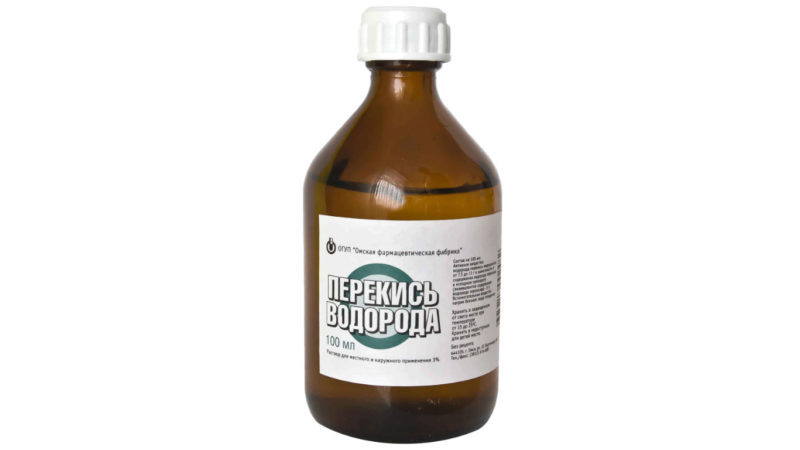
The same solution is used as for rinsing the oral cavity. Only the rinsing technique is different, you need to throw your head back and keep the product in your throat, it is important not to accidentally swallow the medicine.
Rhinitis
In a large spoon of boiled water you need to add 15 drops of peroxide, with the resulting solution drip your nose, wait a few minutes and blow out the mucus.
The use of hydrogen peroxide in folk medicine and the use in non-traditional methods of treatment is based on the antiseptic properties of the drug. But the procedures should be carried out with caution, since there is a risk of getting a burn, in addition, some people may develop an allergic reaction to perhydrol.
Peroxide in Dentistry
In dental practice, hydrogen peroxide is used to rinse after tooth extraction, cleaning canals and other procedures that violate the integrity of the gums. The solution prevents infection and the spread of infection. In addition, with the help of perhydrol you can get rid of the symptoms of periodontal disease:

In 50 g of water you need to add 2 small tablespoons of 3% peroxide, mix. In the resulting solution, moisten the cotton wool and make a compress on the sore gums. The procedure can be repeated up to 3 times a day, it is important not to eat food or water for half an hour after setting the fleece.
The use of hydrogen peroxide in dermatological pathologies
A 3% peroxide solution is used to treat psoriatic rashes and eczema. To do this, a cotton wool is moistened in the liquid and problem areas of the skin are treated. The procedure is carried out twice a day.
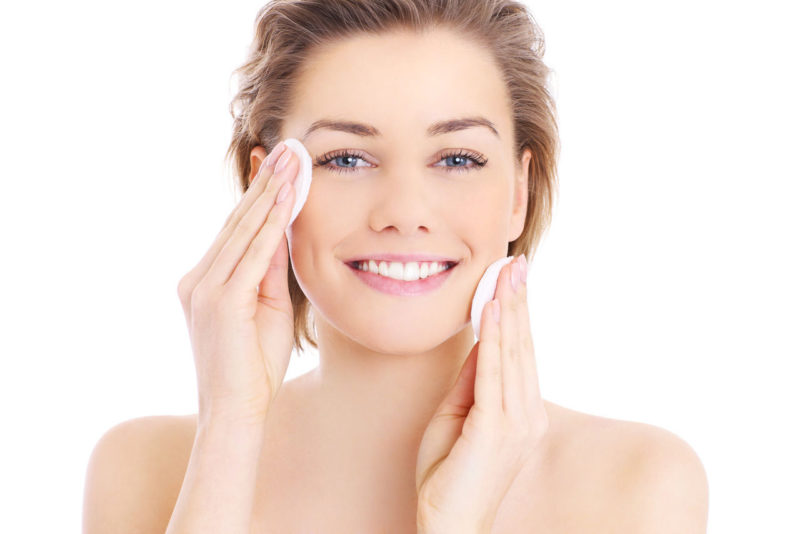
Also, the tool is used to treat open abscesses and acne.
For the treatment of fungal infections, sore spots need to be lubricated with a solution twice a day, the course of treatment is from 1 to 2 weeks.
The use of peroxide according to the method of professor Neumyvakin
Professor Neumyvakin has developed a special regimen for taking peroxide inside, which positively affects the body. Due to the correct intake, overall well-being improves, bacteria die, weight decreases, and deworming occurs.
On the first day of admission, 1 drop of peroxide should be added to 50 ml of pure water and drunk. Reception is carried out three times a day, necessarily on an empty stomach (30 minutes before eating food or at least an hour and a half after).
Then every day the solution is made more concentrated - 1 drop is added. This goes on for 10 days, then a short break is made - 3-4 days.
After a break, the drug is used for 3 days, 10 drops diluted in water, three times a day. Then a break is taken again. So the reception with a break needs to be alternated for 3 days for 2 months.
In order to avoid negative consequences, it is important to follow certain rules of admission:
- It is forbidden to drink the solution with a full stomach.
- You can not use more than 30 drops per day.
- It is undesirable to use peroxide simultaneously with other medicines.
During treatment, side effects sometimes develop - worsening of the skin, drowsiness, general malaise. This is due to the death of pathogenic microorganisms that release toxins during death. Usually these phenomena disappear in the first week of admission.
Harm and contraindications
If used correctly, hydrogen peroxide does no harm. When applied externally, unpleasant phenomena almost never occur. When taken orally, burns of the mucous membranes may develop if a too concentrated solution is used.
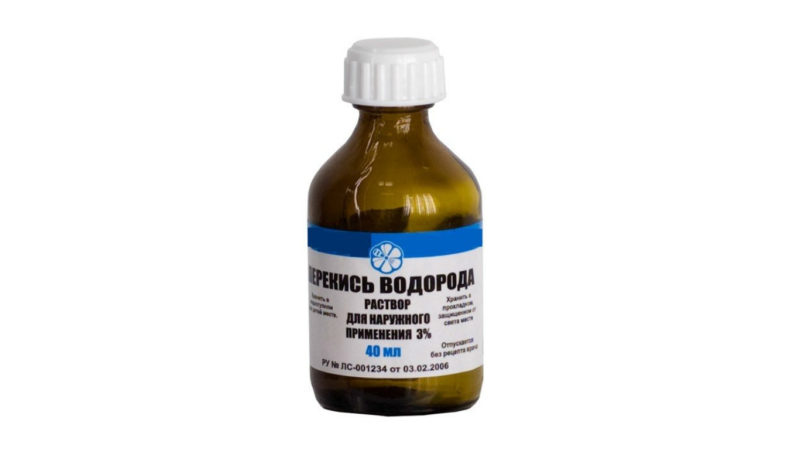
In addition, if you drink peroxide for a long time, then gastritis or colitis can occur, but they usually disappear after stopping intake.
The drug has no contraindications, with the exception of people with allergic reactions to perhydrol. It is also undesirable to use the solution to people who have ever had a transplant.This is due to the fact that peroxide stimulates the immune system, so donor organ rejection may occur.






